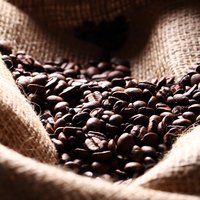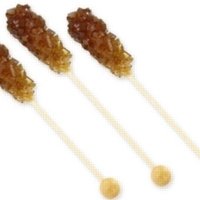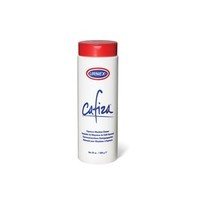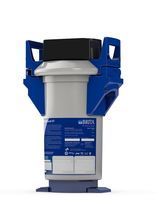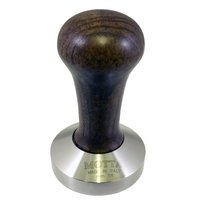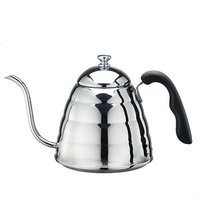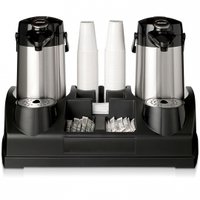FAQ's
My traditional coffee machine is not working
Check that the power supply to the machine is switched on and that the fuse on the main power board has not been tripped
If it is a traditional espresso machine – the on/off switch usually has two positions - check the coffee machine is switched to the heat position
If the machine has an electronic timer check it is not in sleep mode
Always check the fuse first if it is a plug top machine like a grinder or small bean to cup machine.
I’m not getting any coffee from my group head
Check the water supply is switched on – sounds simple, but you’d be surprised!
Take the group handle out and make sure the water is flowing when the handle is absent – if so and the coffee fails to dispense when you return the group handle with coffee in to your group head, your grind is too fine or there is too much coffee in the group handle or you have the wrong filter basket in the handle (single in the double or vice versa)
Machines operate with a pump – if you have a gauge check that it reads 9-10 bar when you press a button for a coffee – if it doesn’t then the pump may have seized and you’ll need to call us.
My steam wand isn’t working
Check the steam holes in the end of the steam wand are not blocked with milk fat – poke them through with a brush or paper clip – use a caffeine wrench and take off the end piece to clean it before replacing it, use a steamy wanda brush to clean the inside of the steam tube – dirt builds up and needs to be removed
Check the steam pressure gauge is reading 1 bar pressure – if not the machine hasn’t heated up or the element is not working – wait for it heat up or place a call
Check the steam control is not broken – if it is a twist control make sure it is not just rotating – the split pin may be broken and not controlling the steam valve.
My machine is leaking
If the water is clear, check that the water supplying the machine is not leaking at the connection.
If the water is dirty, check the receptacle under your drip tray that leads to the waste hose – if this is blocked with ground coffee, remove it with a spoon and flush with water to get the waste flowing again
If the waste hose is not draining away and the water builds up in the receptacle again the waste hose is blocked and needs to be disconnected to clear it – once clear it can be reconnected again
(tip: take photos before you move the waste hose to unblock it, so you know how it is to be put back – if it is put back in a way that means water has to go uphill you will have problems with your waste leaking constantly as it needs gravity to run away)
Check that you still have steam pressure coming out of your steam wands – if it is water the boiler has possibly overfilled and is leaking out the top valve and onto the counter – if you have a sight gauge check the level inside the boiler system
If you can’t stop the leak turn off the power to the machine and then turn off the water and call out our qualified technicians (geographical restrictions apply).
My coffee is too cold
Check that the machine is up to temperature and that you have steam pressure
Make sure you leave the group handles in the groups when not in use to make sure you are not producing coffee through a cold group handle – the less temperature variation between group head and group handle the better the extraction
Are you using cold cups – this is especially an issue in draughty locations, but can affect all as a cold cup will take out approx. 10 degrees from the drink temperature as soon as it hits the cup.
Does it matter which milk I use?
The simple answer is no – the fat content in milk has no bearing on the frothing capabilities – it just affects the taste – the more fat content the more the flavour of the coffee is masked, so maybe those looking for a skimmed milk drink actually really like the coffee…
When you froth milk you are cooking protein – as long as the milk has protein then it can be frothed – but the protein can only be cooked once - most milk has sufficient protein to froth successfully (the only possible exception is rice milk)
To keep the protein levels high:
- Use fresh milk – pay no heed to those who say it must be cold as even old milk can be kept cold, but it will not be fresh and therefore will not have sufficient protein in it as this degrades over time
- Don’t temperature abuse your milk – keep it fresh by keeping it chilled – milk left out will degrade the protein level much more quickly than milk kept chilled
- Replenish previously frothed milk with fresh milk to reintroduce protein to your frothing jug – this will ensure you have some protein to achieve a froth.
My grinder isn’t working
Check that the slider holding the beans back in the hopper is pulled out to allow beans to fall into the blades
If the body of the grinder is getting hot, it may be that either there is a blockage in the blades or the blades are so close together that they cannot move past one another. Turn the grinder off and loosen the blades to a coarser setting – turn the grinder on again to check it is working before resetting the grinder – when resetting the grinder ensure you only move the blades when they are running to avoid getting a bean stuck in the mechanism
If you have a grinder with a trigger doser, make sure that the doser is not full as many have an auto shut off to stop the grinder doser from overfilling and using too much coffee
If you have an on-demand grinder make sure you have pressed the desired selection AND pushed the activator to start the grind – the activator lets the machine know that there is a group handle in place to catch the coffee as it is dispensed.
My bean to cup machine is producing steam but no milk is coming through
Check that the milk container is filled to the desired level and that the milk tube is submerged in the milk
Ensure that the milk tube is not kinked or pinched – this will stop the milk from flowing to the steam for heating
The auto milk frother uses a series of small holes to introduce air into the milk – make sure these are clear by cleaning the mechanism and then try again
Make sure there is no leak in the steam tube or any of the connections – the auto froth system uses a vacuum to suck the milk – if any air penetrates the system the vacuum is compromised and the milk will not be sucked up to the frother
If the milk reaches the nozzle but fails to froth, make sure you are using fresh milk – low levels of protein will not produce frothy milk.
My coffee is coming out too slow
Check the gauge to ensure that the pump pressure moves to 9-10 bar of pressure when you press for an espresso
If you have enough pressure – take the group handle out of the machine and make sure that the water flows well when there is no obstruction – this should eliminate the group solenoid as a problem if it flows well
If the water flows well and the pressure is correct the only thing that can be slowing it down is the coffee –
- you may have too much (you only really need 7g per espresso shot)
- you may have the wrong basket in the handle meaning that you have too much coffee for the space provided by the basket (single in a double basket) and your coffee is too compact
- you may be tamping the coffee too hard – this will compact the coffee and make it hard for the coffee to extract as the water will struggle to find a way through
- your coffee may be ground too fine making it hard for the water to find a way through
You will need to make your coffee less fine and move it towards the coarse setting (one notch at a time) until you achieve the extraction time you are looking for.
My coffee is coming out too fast
Check the gauge to ensure that the pump pressure moves to 9-10 bar of pressure when you press for an espresso and that this is not exceeded – if the pressure is too high it may blow the safety valve, so if the gauge is creeping into the red turn your machine off to avoid this
If the water flows well and the pressure is correct the only thing that can be slowing it down is the coffee –
- you may not have enough coffee (you need at least 7g per espresso shot)
- you may have the wrong basket in the handle meaning that you don’t have enough coffee for the space provided by the basket (double in a single basket) and your coffee is too loose
- you may not be tamping the coffee – this will leave the coffee loose making it easy for water to find a way through
- your coffee may be ground too coarse making it easy for the water to find a way through
You will need to make your coffee less coarse and move it towards the fine setting (one notch at a time) until you achieve the extraction time you are looking for.
Is there a standard set-up for an espresso
Yes – we aim to set-up your equipment so that you use 7g of coffee, ground to the correct consistency to produce 1 fl.oz (35ml) of liquor in 20-25 seconds under 9-10 bar of pressure
Your grinder will dictate the grind consistency and the amount of coffee
Your coffee machine will dictate the pressure and should measure the amount of extraction liquor (unless you have a press to start press to stop machine in which case you need to have some way of measuring your shot to ensure you are not over extracting the coffee)
You are in control of the settings, so any variation from this standard and you need to consider which setting is the one that will get you back to where it should be – it may be more than one variable, but if you check each in turn, you should get your espresso shot back to perfect.
If my espresso is set-up correctly why does it taste so bad
Cleaning – coffee is a food product and much as you wouldn’t prepare food on a dirty plate, you shouldn’t produce coffee on a dirty machine
Backflush every group head with water every night – twice a week backflush every group head with a cleaning detergent – we recommend Urnex, but most proprietary brands are fine
Make sure you clean the group seal with a brush to remove the coffee grounds that build up – if you don’t these will eventually chew away at your rubber group seal and allow the water to find an easy way out over the top of the group handle rather than through your coffee – grouts in the cup and weak extraction are signs of this
Your group baskets are also in contact with coffee and should be cleaned by soaking in a detergent and rinsing ahead of use
Your group handles were originally stainless steel in colour inside and out – over time the coffee oil that drips over the inside to get to the cup will build up and will taste bitter – you might have the most fantastic set-up on your coffee, but if it leaves the group handle and drips over this build up it will taste bitter – keep you group handles clean by soaking in detergent and rinsing before use.
What is a flat white
Please refer to our blog article by clicking here.
Does coffee go off
Yes – coffee is a food product grown on trees – the seeds of a ripe cherry that are processed, dried and graded for selling – once in this ‘green’ (unroasted) ‘bean’ form they can be stored for years – once roasted the properties of the bean are altered and the coffee starts to oxidise which makes it go stale – nothing can stop this process
You can prolong its life by storing it properly once opened, but there is no getting away from the fact that coffee is best served fresh – we store coffee after roasting for around three weeks before it is despatched to you – the way you store the opened coffee will mean that it remains fresher than if you abuse it – after all you wouldn’t leave food to go off and then use it would you!
Remove as much air from the package as possible – reseal using a clip or bag sealer – store in a cool dark place – coffee is porous so shouldn’t be put in the fridge to absorb all of the flavours – nor should it be put in the freezer as this does more harm than good
Only expose as much coffee as you are going to use to the air – once ground you open even more surfaces to the air and this will make it go off even quicker!
Do we need water filtration
It is true that water in Scotland and the North of England is pretty good quality and that lime-scale is far less prevalent than in the South of England.
However, we are finding more and more additives in water in places you wouldn’t expect – they are not always calcium and as such do not fall under the lime-scale tag, but they are nevertheless present and can have an impact on the behaviour and longevity of your equipment.
Filtration is not just to eliminate lime-scale, it is for all particulates – in fact it has been argued that an element of water hardness is required to achieve a good espresso extraction, but unwanted particulates are best removed
We recommend a filter that is suitable for the volume of water that will pass through it – the best way to check is to buy a fitting with a meter on the head 0- this will measure the water passing through and should alert you to the need for a change to the filter cartridge
Filter cartridges that can be stored horizontal or vertical are also worth finding as the cramped environments behind most counters might not always lend them selves to a cartridge that can only stand up
Where you have taste and odour from your water you would benefit from a filter even if it were only for this purpose – 98% of your coffee drink will be water, the better you can make the water the better the coffee will taste.
How do we ensure our coffee is fresh
The best way to make sure your coffee is as fresh as possible would be to give us advance warning of your order so that we can roast it just prior to despatch – we only need about 5 working days to fit this into our production schedule before we are then able to despatch it to you – unfortunately there is a 5 case minimum order for this service
This roast to order system has always been available, but storage space is an issue at a lot of premises so having enough room to hold stock for that period is not always possible – that is why we also despatch from limited stocks that are replenished regularly and rotated to ensure the freshest stock is always available
I like my espresso – can we get it as a filter coffee
The simple answer is no - not only are the two coffees roasted differently, the blend make up will be set-up to account for the different ways the coffee will be extracted and (if pre-ground) the grind will be much coarser for filter than for espresso
Filter coffee is typically extracted using gravity (with the exception of an Aeropress which uses hand pressure) – this means that the coffee is ground much coarser to ensure an even extraction at a given speed to get the most from your coffee – the different extraction method produces different oils in the cup and as such a different taste profile – filter coffee is generally not roasted for as long as espresso to maintain the characteristics of the coffee origins during extraction
Espresso coffee on the other hand is extracted under pressure and as such the grind needs to be sufficiently fine to produce a given liquor at a given flow using 9-10 bars of pumped pressure – if you were to use this grind of coffee for filter it would take far too long to extract as the gravity extraction would be compromised by the fine grind – not only would you not get the oils you get when you produce an espresso you would also over extract the coffee by having the water in contact with it for too long thus producing a different taste profile.

